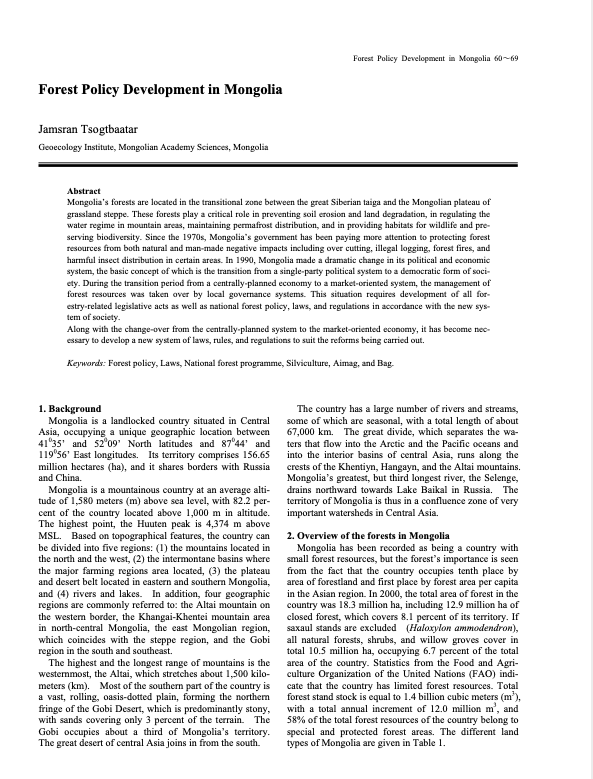Resource information
Mongolia’s forests are located in the transitional zone between the great Siberian taiga and the Mongolian plateau of grassland steppe. These forests play a critical role in preventing soil erosion and land degradation, in regulating the water regime in mountain areas, maintaining permafrost distribution, and in providing habitats for wildlife and preserving biodiversity. Since the 1970s, Mongolia’s government has been paying more attention to protecting forest resources from both natural and man-made negative impacts including over cutting, illegal logging, forest fires, and harmful insect distribution in certain areas. In 1990, Mongolia made a dramatic change in its political and economic system, the basic concept of which is the transition from a single-party political system to a democratic form of society. During the transition period from a centrally-planned economy to a market-oriented system, the management of forest resources was taken over by local governance systems. This situation requires development of all forestry-related legislative acts as well as national forest policy, laws, and regulations in accordance with the new system of society.
Along with the change-over from the centrally-planned system to the market-oriented economy, it has become necessary to develop a new system of laws, rules, and regulations to suit the reforms being carried out.

